Search Results for Tag: PIK
Anthropocene: No ice age – more blizzards?
If you are sitting somewhere on the East Coast of the USA, struggling to cope with 30 inches of snow, you might be forgiven for reacting with relief to a report released by the Potsdam Institute for Climate Impact Research (PIK) indicating human-made climate change is suppressing the next ice age. With a wink in your eye, you might be very grateful that these extreme conditions are only going to last for a few days and not become the everyday normality of a new ice age.
There are those (but increasingly few of them) who might even thank the fossil fuels industries for averting a scenario like “The Day after Tomorrow” and ensuring that the relatively comfortable interglacial in which we live is likely to continue for the next 100,000 years. That is the conclusion of the study published in the scientific journal Nature.
The problem is that postponing an ice-age illustrates that human interference with natural climate cycles over a relatively short time has the potential to change the world for a hundred thousand years to come, with all the problems that come with it. And given that the increase in extreme weather events like the US snowstorm is highly probably related to anthropogenic climate change, perhaps an ice age in 50,000 years would be the lesser evil.
Burn fossil fuels, suppress the ice age
Using complex models to try to find out which factors influenced the last eight glacial cycles in earth history and what is likely to lie ahead of us, the scientists found that as well as astronomical factors like the earth’s position in relation to the sun in different stages of its orbit, the CO2 concentration in the atmosphere is a key factor.
I talked to physicist and earth systems modeler Andrey Ganopolski, lead author of the study to find out more about the research and the background.
According to Milankovich’s theory, a new ice age should occur when the earth is far away from the sun and summer is colder than usual in the northern hemisphere, at high latitudes in Canada and northern Europe. These are the areas where big ice sheets can grow. At the moment, Ganopolski explained, we have a situation where our summer occurs when the earth is far from the sun. So in principle, we have the conditions when a new ice age can potentially start. He and his colleagues wanted to understand why we are not living in an ice age when astronomically, the conditions are just right to move towards a new ice age.
Meddling with the planet
They come to the conclusion that naturally, without any anthropogenic influence, we would expect the new ice age to start around 50,000 years from now. That would mean that this interglacial, the Holocene, in which we live now, would already be unusually long. In the past, an interglacial lasted only 10 or 20,000 years, but this one is expected to last for 60,000 years.
But our emissions of greenhouse gases are postponing this even further. Relatively large anthropogenic greenhouse gas emissions – say two to three times what we already emitted – would, according to the scientists’ model, additionally postpone the next ice age, so that it would only start 100, 000 years from now, so we would completely skip one glacial cycle, which never happened in the last three million years.
Humankind as a geological force
Now regardless of whether you are a fan of ice and snow or one of those who say they can happily live without any more ice ages, the study’s findings illustrate just how long anthropogenic influence on climate will continue. Humanity, it seems, has become a geological force that is able to suppress the beginning of the next ice age, according to the PIK experts. Human behavior is changing the natural cycles that have shaped the global environment and human evolution.
Over the last 3 million years, glacial cycles were more or less regular. Most of the evolution of humans occurred during those last three million years. Ganopolski says humans can be seen as a kind of product of glacial cycles, because the conditions were probably right to increase the size of our brain, because we had to be clever to survive in such a variable climate.
Who cares?
But given that it is easier and pleasanter to live in non ice-age conditions, there is still an understandable tendency to respond to the ice-age-postponement announcement with: “so what?”
Ganopolski argues one reason the study is significant is that it does away with the arguments of some climate skeptics who have argued that warming the atmosphere by burning fossil fuels is not a bad thing, because it could avert an “imminent” ice age (a theory first made popular around thirty years ago, he says). Since the research indicates there is none on the horizon for more than 50,000 years anyway, this is nonsense, says Ganopolski.
But the main reason the research findings deserve attention, he says, is that they show we can affect the climate for up to a hundred thousand years. He believes a lot of people think if we stop using fossil fuels tomorrow or the day after, everything will be fine. In fact, anthropogenic carbon dioxide will stay in the atmosphere for an extremely long time. “That means we are affecting earth’s future on a geological time scale”, he says.
Whether the next ice age comes in 50,000 or 100,000 years may seem irrelevant to a lot of people, faced with the concerns of life today. But the effects of our warming the globe are already being felt and will have considerable implications well before that, Ganopolski reminds us. He says the new study just shows how massive our interference with the earth’s systems is, and backs up the need to take action now to cut greenhouse gas emissions.
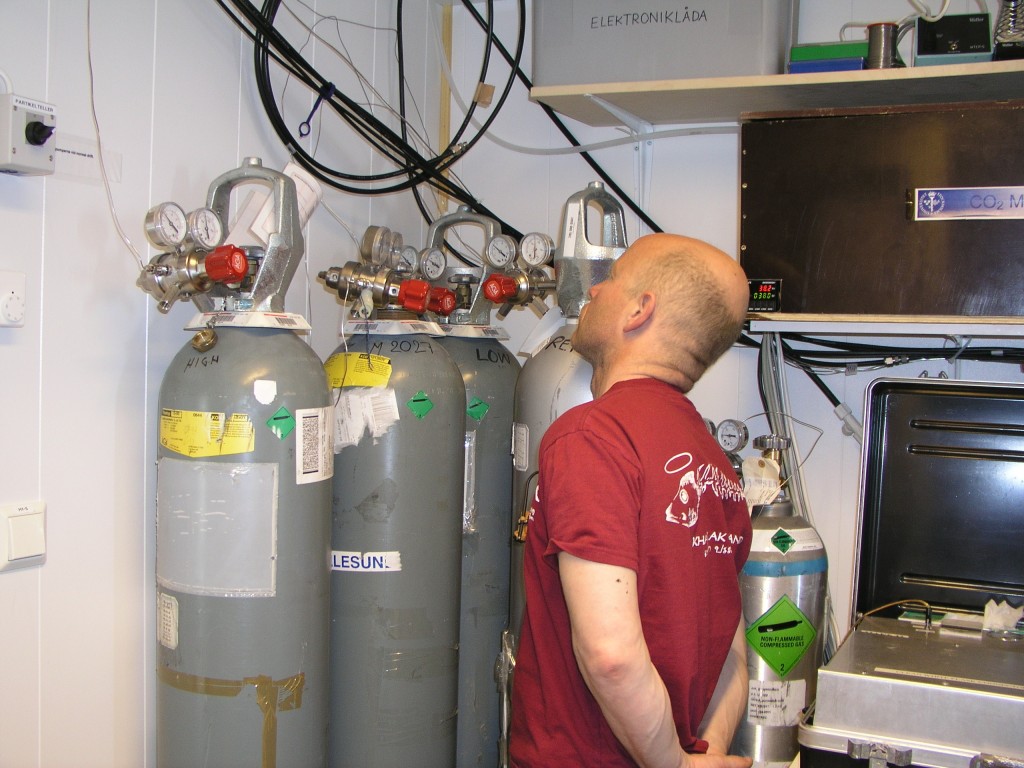
Rising CO2 emissions are influencing glacial patterns (Measuring station on Svalbard, Pic. I. Quaile)
Greenland and Antarctic in the Anthropocene
He mentions the research also deals with Greenland and Antarctica:
“What we show is that even with the CO2 concentration we have already, we can expect that a substantial fraction of these ice sheets will melt. So obviously, in this respect, any further increase of CO2 will have even more negative effects”.
Sea level rise, ocean acidification, changing food supplies, floods, droughts…and, yes, even more of those extreme blizzards, fuelled, paradoxically, by warming seas…maybe there is more to this delaying the ice age business than first seemed.
So are we living in the “Anthropocene”, i.e. an era in which not nature but humankind is determining the shape of the world we live in now and for centuries to come? Ganopolski and his colleagues say yes. He stresses what we are doing to the climate and the speed at which it is happening represent unprecedented, substantial deviation from the natural course of things.
“So if you continue to emit a substantial amount of carbon dioxide, the Anthropocene will last for hundreds of thousands of years, before systems return to anything like “normal” conditions”, he says.
Another study published in Nature today provides further evidence that human intervention is responsible for the annual heat records that have been in the news so often recently they run the risk of losing their news value. Ganopolski’s PIK colleague Stefan Rahmstorf, one of the authors, says the heat records, with 13 of the last 15 years the warmest since records began, can no longer be explained by natural climate variation. But they can be explained by human-induced climate change.
But is there any point in making potentially uncomfortable changes to the way we live today if we have already changed the atmosphere so massively, for such a long time to come? Ganopolski stresses the extent and speed of the changes and impacts are no grounds for resignation:
“There is no justification for making the climate even warmer than it is. It is a matter of how much CO2 we will emit into the atmosphere. Basically, it will affect all generations, and if we care about them, we should stop using fossil fuel as soon as possible.”
Sounds sensible to me.
Can we still avert irreversible ice sheet melt?
Earlier this week, I was able to follow up my last talk with Professor Stefan Rahmstorf from the Potsdam Institute for Climate Impact Research (PIK), after he returned from the Paris climate science forum. After the publication of the study he was involved in on paleoclimatic data linking global temperature with sea level rise, and having heard his views on the science consensus ahead of the December UN summit in Paris, I wanted to know how he views the prospects for the polar ice sheets.
A question I return to often is whether anything we do to reduce emissions from now onwards – given that huge damage has already been done by our fossil fuel emissions and that the CO2 will remain in the atmosphere for a very long time to come – can prevent the ice sheets in the Antarctic and Greenland from reaching a “tipping point”.
Professor Rahmstorf gives this definition of a “tipping point” – which can mean different things to different people in different contexts:
“Climate tipping points are points of no return, where you cannot stop a process that has been set in motion. It’s a bit analogous to the situation where you are sitting in a rowing boat and you lean over a bit to one aside and not much happens. Then you lean a bit more and a tipping point comes where the boat simply tips over. One of these points of no return is with our continental ice sheets, where their further melt-down becomes inevitable and unstoppable. And we have to realize that we have enough continental ice on this planet to raise global sea level by more than 60 metres. That means we cannot afford to lose even a very small fraction of that ice without drowning coastal cities and small island nations.”
Is the boat still afloat?
But, of course, we are already losing ice at a worrying rate. Rahmstorf cites recent research showing that at least a part of the West Antarctic ice sheet has already been destabilized.
“We probably have already crossed the tipping point for a part of West Antarctica. That is probably going to already commit us to about three metres of sea level rise.”
Of course this is not likely to happen in the very near future. But the problem with the tipping points is, of course, that there is no going back, as Rahmstorf explains:
“Sea level has already risen 20 centimetres globally since the late 19th century, due to modern global warming, which is very basic physics. It’s melting continental ice sheets. And also the oceans are being heated up, which expands the ocean water, because warm water takes up more space. And by the year 2100, with unmitigated emissions, we are looking at one meter of sea level rise, which already, for vulnerable coastal areas like delta regions, like Bangladesh for example, will dramatically increase the storm surge risk. But sea level rise will not stop in the year 2100, because the ice sheets are actually quite slow to melt, and within the next decades, we will be causing a long-term sea level rise commitment by several metres for every degree of global warming that we cause.”
Greenland – and Miami, St. Petersburg, Bangladesh…
Record melting appears to be happening on Greenland at the moment. I asked Rahmstorf how safe the world’s biggest island and the largest area of freshwater ice in the northern hemisphere (See also the Ice Island in Pictures) is from reaching a point of no return. He wasn’t able to give a reassuring answer:
“We don’t know exactly where the tipping point is for the Greenland ice shield is. The IPPC estimates anywhere between one and four degrees of global warming. We are already at one degree warming, so we may well cross that tipping point in the next decades.
In the review of the relation between global temperature and sea level rise from polar ice disintegration I discussed in the last blog post, Rahmstorf and his colleagues found that just a slight further rise in temperature might equate to a rise in global sea level of up to six metres. I asked him what that would mean for the world right now:
“There would be quite a number of large coastal cities I cannot imagine could still be defended. Think of New York city for example. Or Miami would be one of the first cities to go. St. Petersburg, Alexandria, Manila – you name them. Once you are talking about metres of sea-level rise, the consequences would be quite catastrophic. Especially as it is to be feared that people will not react proactively by move away from the danger zone, but will probably stay in their cities until a major storm surge hits. Like Hurricane Katrina hitting New Orleans, which also was a case where experts had warned for a long time that the city was in danger, once the next hurricane strikes, but people still didn’t act according to the precautionary principle. As they should have, and as we must do to prevent a climatic disaster in future.”
Can we keep the ice chilled?
So what would we have to do to keep sea level in check?
“Emissions would have to be close to zero by mid-century, so we are not talking about small cosmetic adjustments, but a transformation of our energy system, decarbonization, that is getting out of the carbon-based energy system. The good news is that the technologies to do that are available. It’s all about mustering the political will. And, of course, fighting the particular interests which are opposing this transformation.”
Stefen Rahmstorf is not one of those scientists who prefer to sit on the fence and leave the interpretation of his research and their implications up to the politicians. He is convinced only rapid action to stop emissions can prevent catastrophic climate change – including the melt of the polar ice.
I have interviewed him on previous occasions in the last few years. This time, I was surprised by his optimistic stance on whether the international community can still do anything in time to stop global warming from reaching the dangerous level of two degrees (or even one point five, as Rahmstorf and others say would be far preferable):
“There’s still a good chance that a strong agreement coming out of the Paris summit in December could mean we could avoid the Greenland tipping point. I am cautiously optimistic that Paris will reach a meaningful agreement, not necessarily one that guarantees that we will stay below two degrees global warming, but one that will be seen in hindsight as a real turning point, from where emissions started to fall soon after. The key point is – the sooner we stop global warming, the better the chances are that we avoid future critical tipping points.”
All we need, says Rahmstorf, is the political will to make use of the technologies available, take on the fossil fuels lobby, and clean up our energy system.
Listen to my interview with Stefan Rahmstorf on DW’s Living Planet this week.
Polar ice set for six-metre sea level rise?
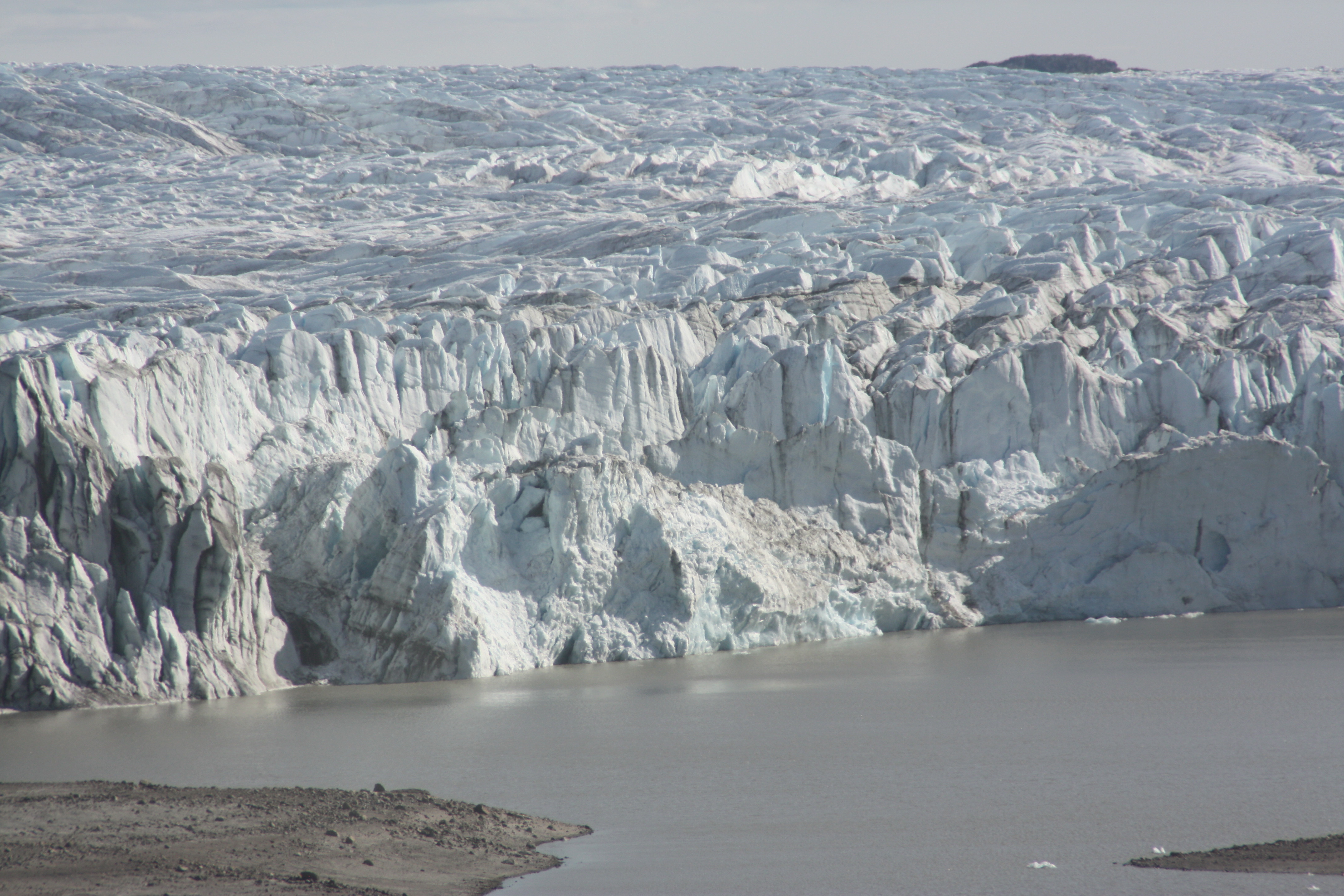
Small increases in global average temperature may eventually lead to sea level rise of six metres or more, according to evidence from past warm periods in Earth’s history.
That was the worrying message from a paper published in the journal Science this week. The researchers, part of the international “Past Global Changes” project, analysed sea levels during several warm periods in Earth’s recent history, when global average temperatures were similar to today or slightly warmer – around 1°C above pre-industrial temperatures.
I was able to talk briefly to one of the authors, Stefan Rahmstorf from the Potsdam Institute for Climate Impact Research (PIK), who was in Paris at the international scientific conference “Our common future under climate change” this week. (The article I wrote on that event, billed as the biggest climate science gathering ahead of the key COP in Paris in December, and the full interview with Rahmstorf are online now).
Rahmstorf described the new study on polar ice sheet disintegration and sea level as “a review of our state of knowledge about past changes in sea level in earth’s history, especially looking at all the data we have on past warm periods, due to the natural cycles of climate – the ice age cycles – that come from the earth’s orbit.”
He went on: ”We have had warmer times in the past, the last one was about 120,000 years ago, and we find that invariably, during these warmer times, the sea level was much higher. It was at least about six meters higher than today, even though temperatures were only a little bit higher, maybe one to three degrees warmer – depending on what period you are looking at – compared to the pre-industrial climate.”
Bad news for coastal dwellers
Not happy reading for anyone living close to the coast, if you look at temperature development today:
“Basically the message is: the kind of climate we are moving towards now – even if we limit warming to two degrees – has in the past always been associated with a sea level several metres higher, which would of course have catastrophic consequences for many coastal cities and small island nations.”
With warming currently on course to reach four degrees and more by the end of this century if greenhouse gas emissions continue on their present trajectory, this message adds yet another piece of evidence to motivate the world’s governments to come up with a new World Climate Agreement at the UN Paris summit at the end of the year – and to get moving towards a zero-carbon economy asap.
The interdisciplinary team of scientists concluded that during the last interglacial warm period between ice ages 125,000 years ago, the global average temperature was similar to the present, and this was linked to a sea-level rise of 6 to 9 metres, caused by melting ice in Greenland and Antarctica. Around 400,000 years ago, when global average temperatures were estimated to be between 1 to 2 degrees Celsius higher than –pre-industrial levels, sea level reached 6 to 13 meters higher. The lead author of the study, Andrea Dutton from the University of Florida, told journalists global average temperatures were similar to today during these recent interglacial periods, but polar temperatures were slightly higher. However, she stressed: “The poles are on course to experience similar temperatures in the coming decades”.
The Arctic is currently warming faster than the global average. IPCC estimates indicate that it could be almost two degrees warmer by 2100 compared with the temperature from 1986 to 2005 – IF the two-degree target is adhered to. Otherwise, it could rise by as much as 7.5°C.
Speed of sea level rise hard to predict
The authors of the study stress that the further back you go (they tried to estimate sea level as long as three million years ago), the more difficult it gets to calculate precisely how high sea level was, given that geological forces push and pull the Earth’s surface and can also cause vertical movement measuring tens of metres. This makes it hard to separate the geological changes in shoreline position from sea level rise caused by polar ice sheet disintegration.
Still, the authors point out that small temperature rises of between one and three degrees were, in the past, like today, linked with magnified temperature increases in the polar regions, which lasted over many thousands of years.
They conclude that even keeping to the overall two-degree warming limit is no guarantee: “Even this level sustained over a long period of time carries substantial risk of unmanageable sea level rise, not least because carbon dioxide remains in the atmosphere for over a thousand years”.
The researchers are not able to say how fast sea levels rose in the past, which would be a key piece of information for planning adaptation. Further research will be necessary for that.
Co-author Anders Carlson of Oregon State University says by confirming that our present climate is warming to a level associated with significant polar ice-sheet loss in the past, the study us providing “perhaps the most societally relevant information the paleo record can provide”.
Carlson heads the PALSEA2 Working Group, hosted by the Past Global Changes (PAGES) project, which used computer models and evidence from around the globe to come up with the conclusions in the study.
Stefan Rahmstorf draws a clear conclusion from the results of this research and other recent studies on instabilities in the Antarctic ice sheet and changes in ocean currents:
“This really calls for limiting warming to 1.5 degrees. And it is still feasible to limit warming to 1.5 degrees. But that requires a much stronger political will than we currently have”.
Still, the Potsdam professor is more optimistic than he used to be that advances in renewable energy and other technologies and growing awareness of the negative impacts climate change is already having around the globe could mean the UN Paris conference at the end of the year will mark a turning point.
Not that he thinks Paris can “do it all”. As you’ll see if you read my interview with him, he is hoping for the start of a process similar to the Montreal Protocol, where the original agreement was not too strong, but worked eventually by toughening up as it went along. Now that would be really good news. He told me it was time to “turn the tide of rising emissions”. Here’s hoping it happens in time to keep the sea level around the world well below that six metres that were there in the past.
Ice paradoxes from pole to pole
Returning after a longish break with little access to news and data, there are several ice and snow stories jumping out of my mailbox at me. I’ve picked out two which those of a skeptical persuasion might say disprove some key climate assumptions, but which actually, in fact, confirm some trends and predictions.
Worrying, but not unexpected, are the latest measurements of the extent of the Arctic sea ice. In February, the experts at the National Snow and Ice Data Center (NSIDC) based in Boulder, Colorado, noted a record for the lowest observed maximum sea ice extent. Although it seems the sea ice did grow at some points during March, the overall for the month was the lowest recorded since satellite measurements began in 1979. The average extent for the month was 14.39 million square km – some 1.13 million square km below the 1981-2010 long-term average. The previous March low of 14.45 million square km was recorded in 2006.
In the Arctic Journal, Kevin McGwin quotes Andy Mahoney, a geophycisist with the Sea Ice Group at the University of Alaska Fairbanks, as saying the irregular pattern, with a kind of “double dip”, with the ice decreasing, increasing, then decreasing again, is “a pretty unusual event, regardless of the reason”. Normally, the ice levels would increase to the seasonal maximum first in March, then decline.
One reason, Mahoney says, could be the wind blowing ice into the regions where ice growth was observed, according to the NDSIC the Bering Sea, Davis Strait and around Labrador.
No contradiction to climate warming theory
The NSDIC says warm conditions in the Bering Sea and the Russian Sea of Okhotsk contributed to the record low winter ice maximum.
The overall downward trajectory, however, is clear. The brief increase in March is not a sign that the sea ice is recovering. Mahoney told the Arctic Journal parts of Alaska had seen abnormally high temperatures this winter, which was in line with the overall seasonal ice observations.
“What drives the maximum extent is what happens at the margins, and they can grow and retreat due to short-term variants. The conditions in the central Arctic, far from the action, are indicative of the warm year we’ve had in Alaska,” he said. Barrow, on Alaska’s northern coast, far away from the southern margin, for example, saw a lot of broken ice this winter, according to Maloney.
WWF expressed concerned about the latest figures:
“This is not a record to be proud of. Low sea ice can create a series of reactions that further threaten the Arctic and the rest of the globe,” said Alexander Shestakov, Director, WWF Global Arctic Programme.
“This chilling news from the Arctic should be a wakeup call for all of us,” said Samantha Smith, the leader of WWF’s Global Climate and Energy Initiative. She stresses the need to cut global emissions to halt the Arctic melt.
The proportion of thick Arctic ice that lasts multiple years has dwindled over the past two decades. A recent study shows that Arctic sea ice has thinned by 65 per cent since 1975, leaving ice that is more susceptible to melting.
Writing for Alaska Dispatch News (AND), Yereth Rosen notes that the most dramatic changes in the Arctic sea ice extent have been in the melt season, not in the period of maximum winter coverage. He quotes NSIDC scientist Julienne Strove, who led a study published last year in Geophysical Research Letters which showed the open-water season is lengthening, mostly because of extended melt in summer and autumn. So is this additional winter record a sign of more melting to come? Only time will tell, but the signs are not looking good.
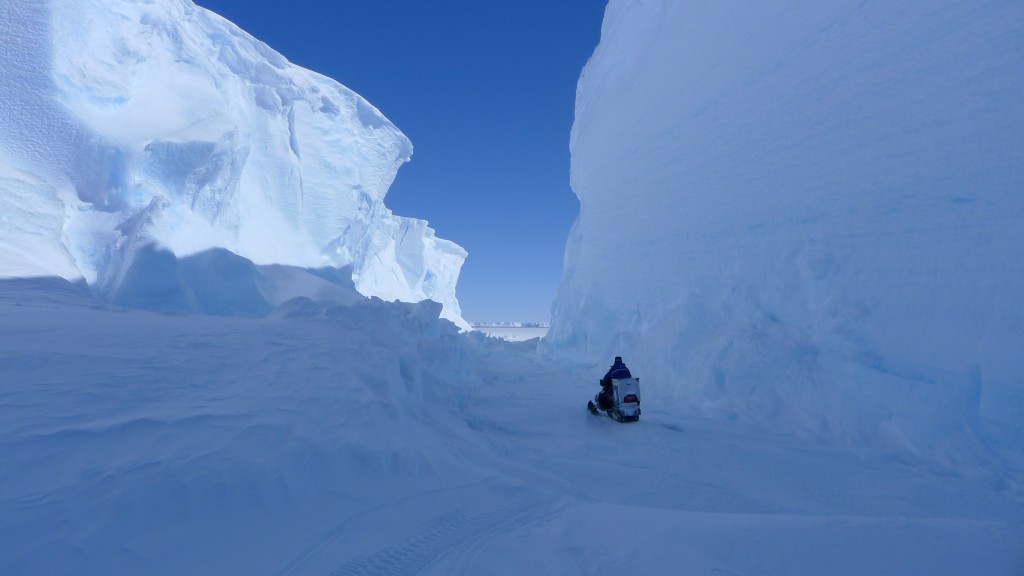
Warmer temperatures, more snow? Belgian International Polar Foundation shot of director and explorer Alain Hubert in the Antarctic.
A story from the opposite pole has also attracted attention. It says climate change is actually increasing the amount of snow in the Antarctic. Puzzling? Not necessarily.
More heat, more snow?
An international study headed by Germany’s Potsdam Institute for Climate Impact research (PIK) comes to the conclusion that every degree of regional warming could increase snowfall there by around five percent. The estimate is based on ice cores and climate modeling.
The information adds a new element to calculations of how much the Antarctic will contribute to global sea level rise. Some people might assume more snow would stop the Antarctic from losing mass. In fact the increasing weight of new snow and ice can make it slide towards the coast and into the ocean faster. In this connection, you might like to read some more stories on these Antarctic issues:
Thicker-ice-in-the-antarctic-good-news-for-the-climate?
Antarctic melt could raise sea levels faster
West Antarctic ice sheet collapse unstoppable
Anders Levermann, one of the new study authors, whom I have spoken to several times on the effects of climate change on the Antarctic and global sea levels, says the latest results back up earlier conclusions that the Antarctic will lose more ice than it will gain and thus have a major influence on global sea level. Levermann, from PIK, is also one of the lead authors of the sea-level chapter of the IPCC report. He stresses that the latest study just provides yet another piece of the “jigsaw puzzle” coming together on how global sea level is likely to develop in the future.
If the world leaders called on to come up with a new world climate agreement at the end of this year need any more motivation, this scientific research from both ends of the world should really give them an extra push.
Berlin Wall – Hope for Arctic?
The statement by veteran Arctic researcher Peter Wadhams that the Arctic could be ice-free in summer as early as 2020 sparked a lot of discussion. Recently I had the chance to talk to Professor Stefan Rahmsdorf, Professor of Physics of the Oceans and head of Earth System Analysis at Germany’s Potsdam Institute for Climate Impact Research (PIK) about Wadham’s forecast.
![]() read more
read more




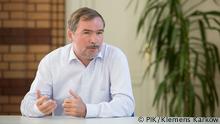

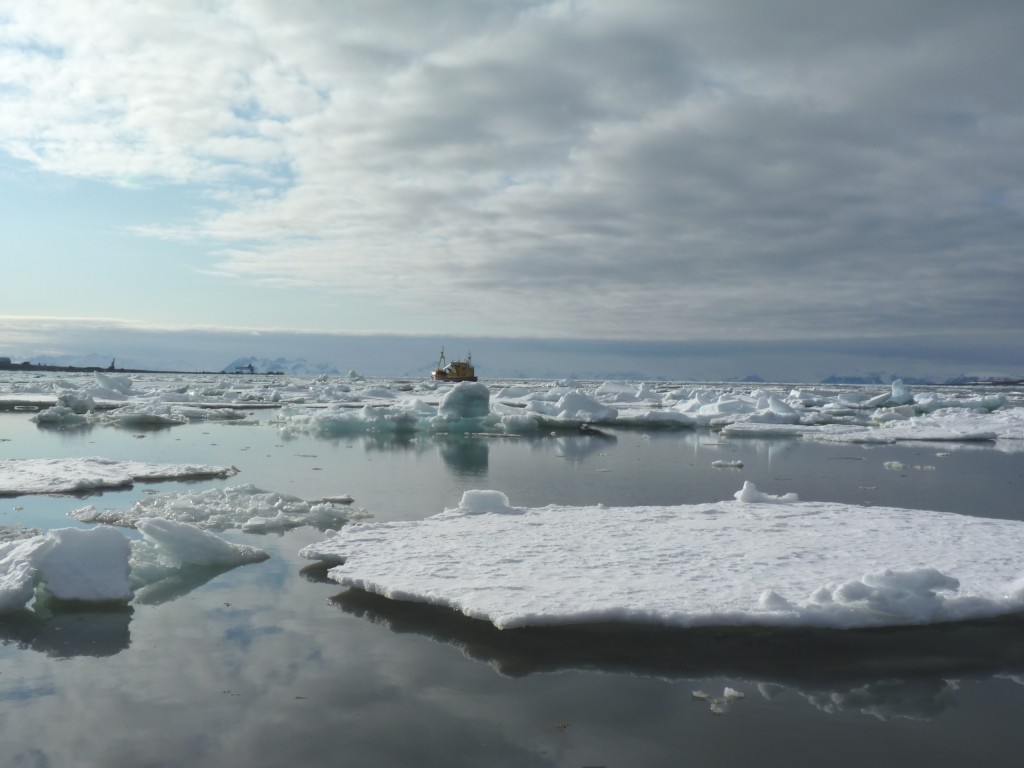


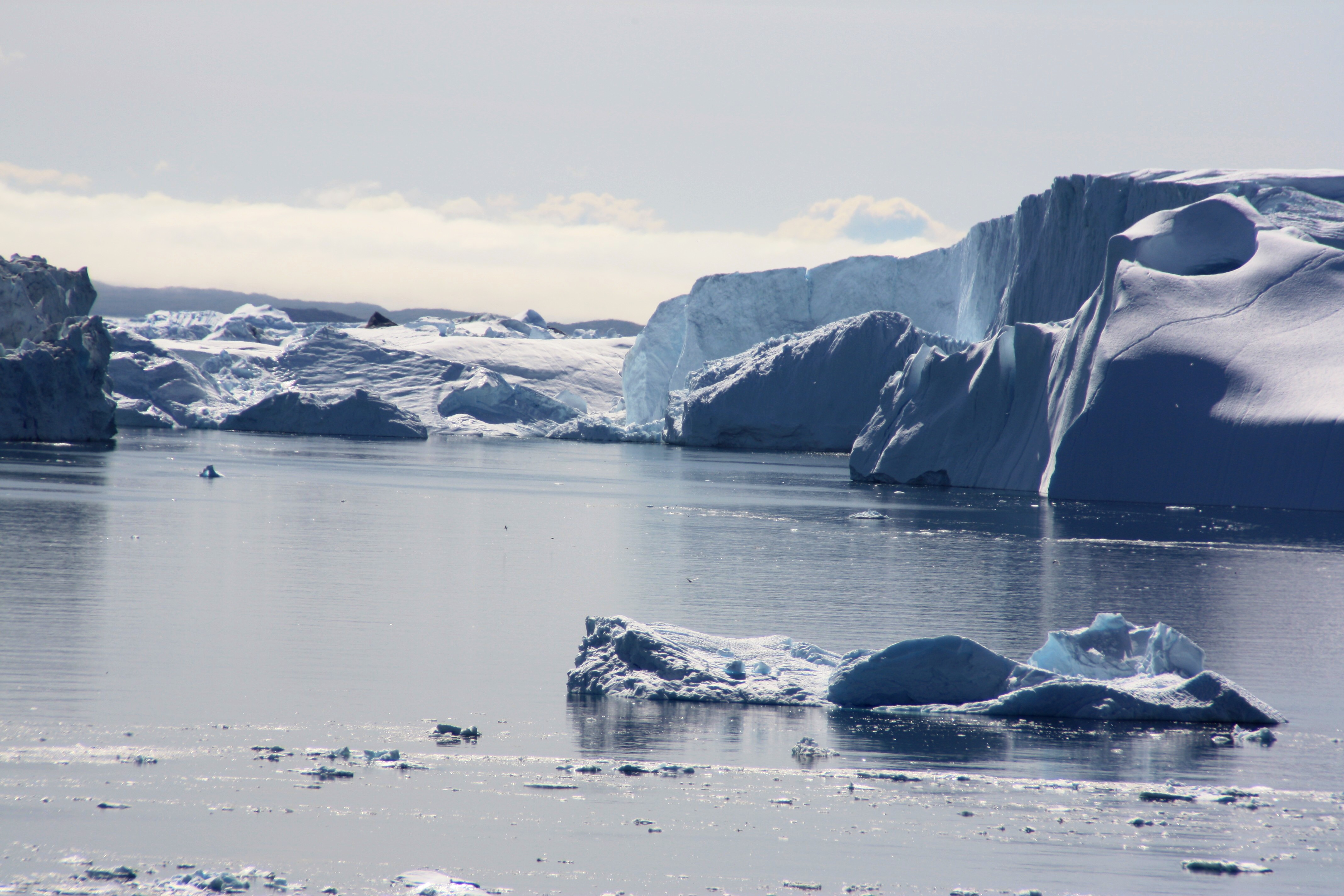
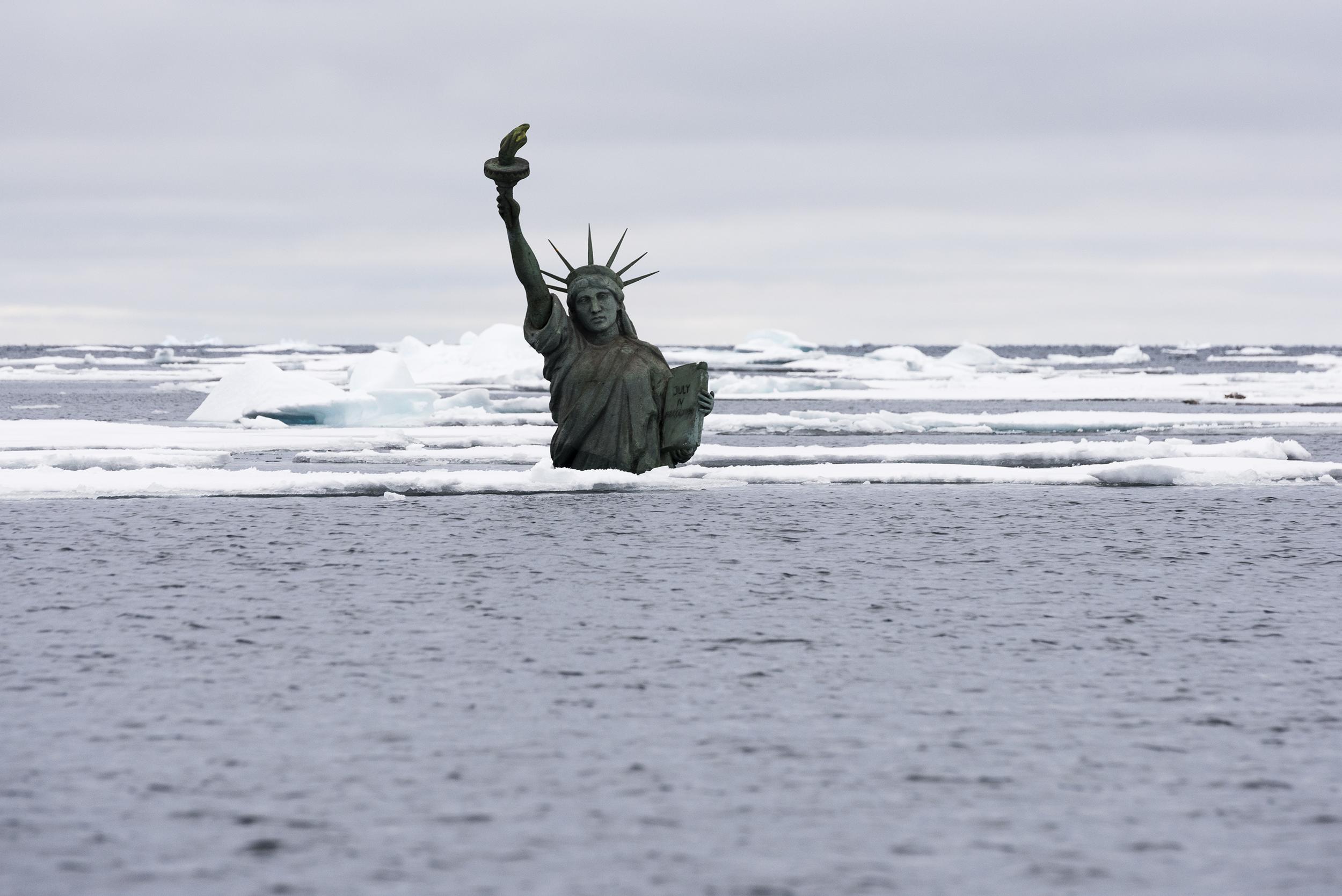
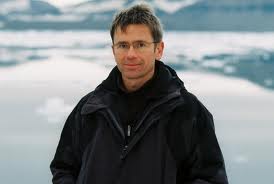

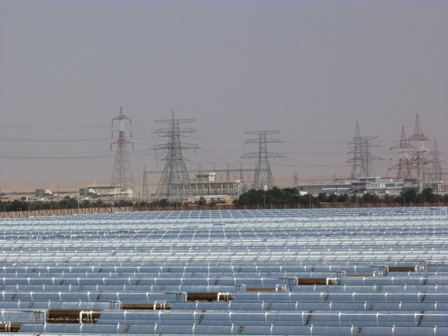
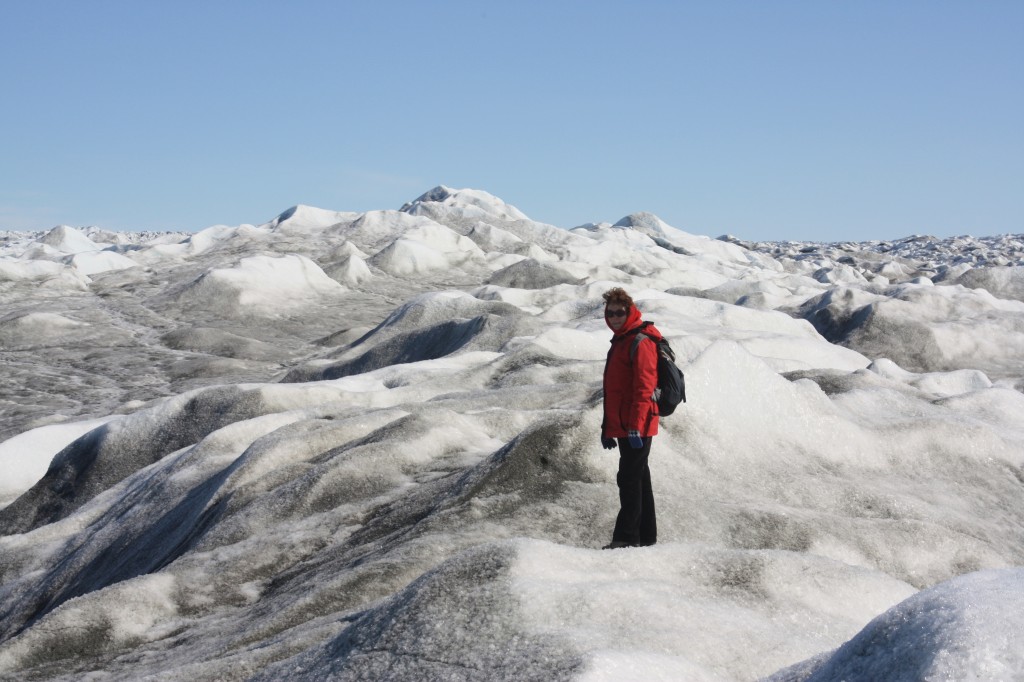


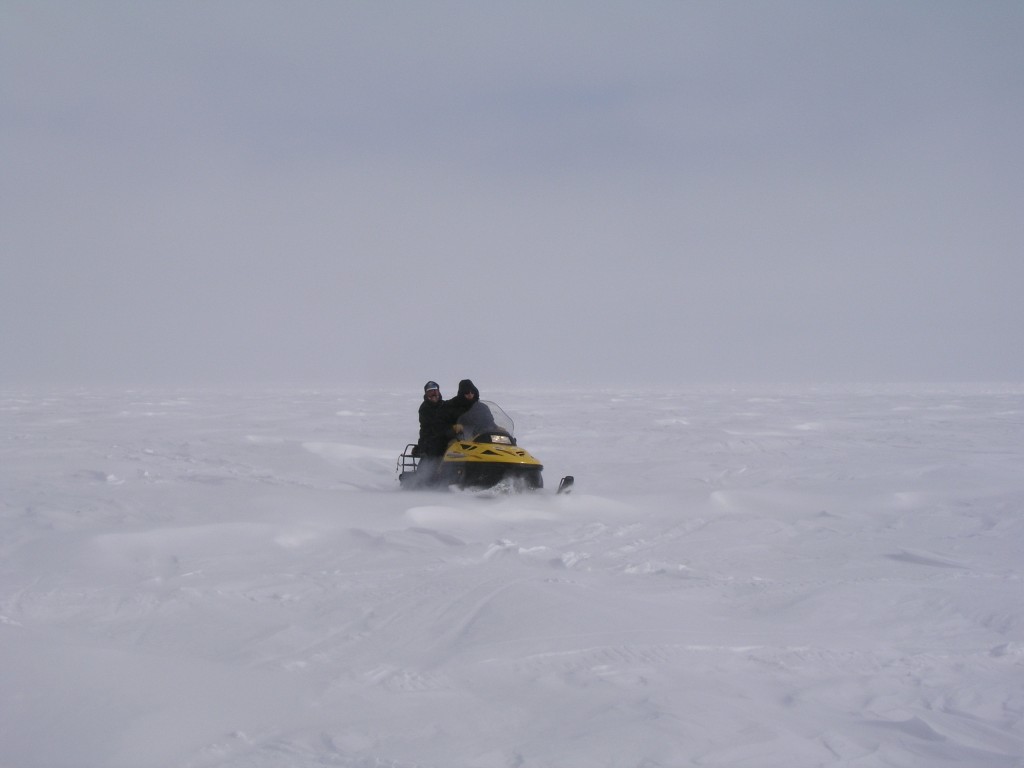
















Feedback